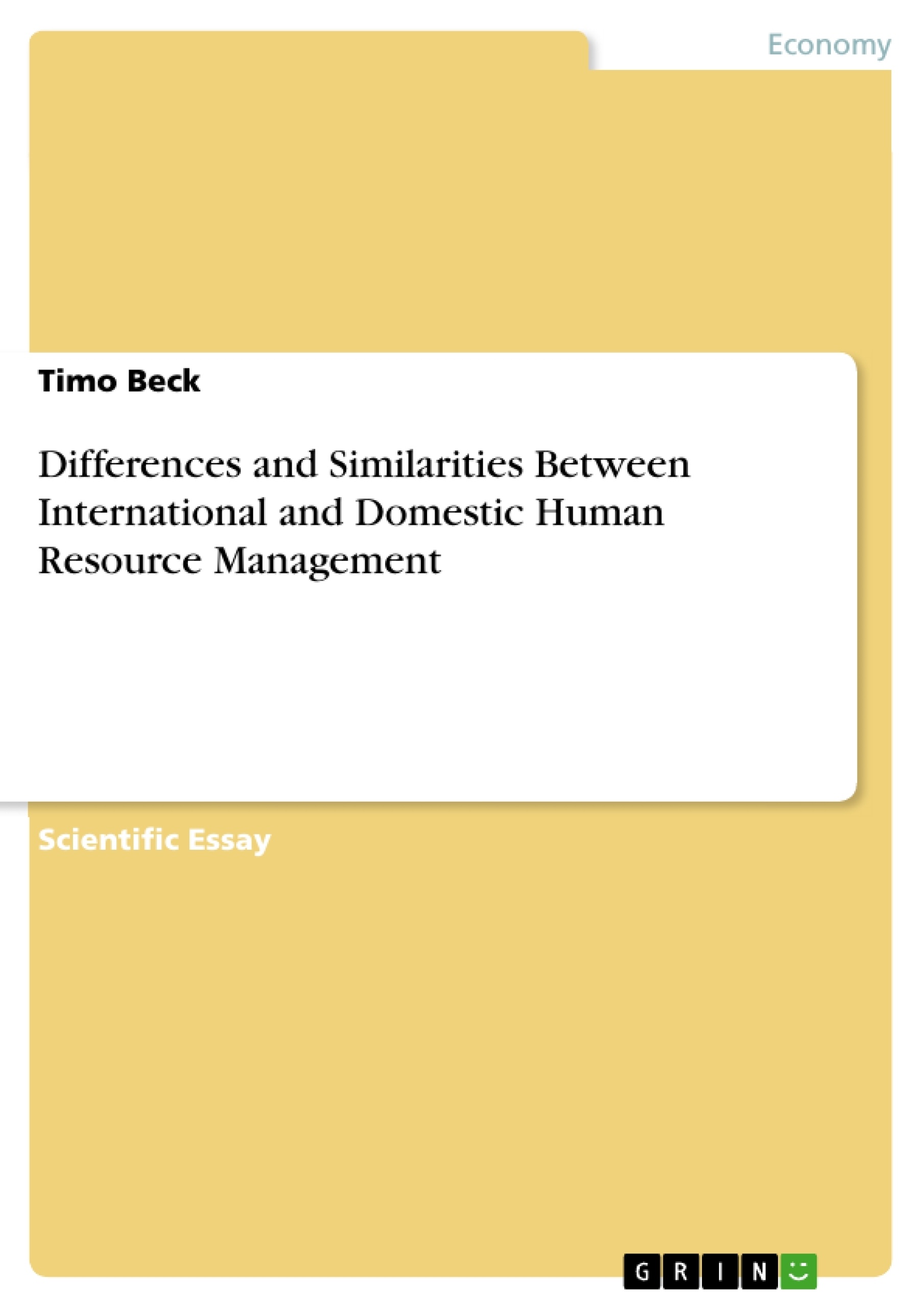“The primary cause of failure in multinational ventures stem from a lack of understanding of the essential differences in managing human resources in foreign environments“ (Desatnick & Bennett 1978).
The world has become more globalized, competitive, dynamic and uncertain than ever before. As more and more firms operate internationally, the search for the elements of global competitive advantage is a prominent theme in the management literature (Dickman & Müller-Camen, 2006: 580). There is a clear need to develop an understanding of how to compete successfully on the global playing field. A major component of this understanding appears to be the field of human resource management and, in particular, the field of international human resource management (IHRM) (Schuler, et al., 1993: 419).
The effective management of human resources in an international context is increasingly seen as a key source of competitive advantage in international business; and the quality of management seems to be even more critical in international than in domestic operations (e.g. Monks, et al., 2001). Due to the importance of the topic, there has been a significant amount of research on IHRM in recent years. Some of the major debates are concerned with the development of models and concepts of strategic international human resource management (SIHRM) (e.g. Schuler & Tariq 2007) and the question whether successful domestic HR strategies can be applied in a global context (e.g. Schuler & Jackson, 2007: 162).
The aim of this essay is to compare domestic human resource management (DHRM) with the concept of IHRM. After briefly defining the key terms, the author with outline both concepts and identify all major similarities and differences. At the end, some final conclusions will be drawn.
Table of Contents
- Introduction
- DHRM versus IHRM
- Definitions
- Similarities
- Differences
Objectives and Key Themes
The aim of this essay is to compare and contrast domestic human resource management (DHRM) with the concept of international human resource management (IHRM). The essay will define the key terms, outline both concepts and identify major similarities and differences.
- Defining and contrasting DHRM and IHRM.
- Identifying similarities in HR activities performed in both domestic and international contexts.
- Examining the impact of environmental forces on HR practices in both domestic and international businesses.
- Analyzing the differences between DHRM and IHRM, highlighting the increased complexity of IHRM.
- Exploring the six key factors that contribute to the complexity of IHRM, including the need for a broader perspective, increased HR activities, and risk exposure.
Chapter Summaries
Introduction
This section introduces the concept of international human resource management (IHRM) and its growing importance in a globalized business world. It emphasizes the need for understanding IHRM as a key element of global competitive advantage. The section also highlights the increasing research on IHRM, focusing on the development of models and concepts for strategic international human resource management (SIHRM).
DHRM versus IHRM
Definitions
This section provides definitions for both domestic human resource management (DHRM) and IHRM. DHRM is defined as the activities an organization undertakes to effectively utilize its human resources, encompassing HR planning, staffing, performance management, development, compensation, and employee relations. IHRM is defined as the global management of human resources, with a focus on understanding, researching, applying, and revising HR activities in both internal and external contexts. The concept of strategic international human resource management (SIHRM) is also introduced, emphasizing its focus on linking HRM with organizational strategies for achieving sustainable competitive advantage.
Similarities
This section outlines the similarities between DHRM and IHRM, highlighting the shared nature of many HR activities. It emphasizes that HR managers in both domestic and international contexts need to engage in similar activities such as planning, hiring, training, compensation, motivation, and employee relations. The section also discusses the impact of environmental forces, such as political, legal, cultural, and economic factors, on both domestic and international HR departments. The similarities in the major objectives of HR in both domestic and international businesses are also highlighted, focusing on the role of HR in supporting business strategy and ensuring organizational effectiveness.
Differences
This section explores the significant differences between DHRM and IHRM, arguing that the complexity of operating in different countries and employing diverse nationals is a key differentiator. The section introduces Dowling's model, which identifies six factors that contribute to the complexity of IHRM, including increased HR activities, a broader perspective, changes in emphasis, more involvement, risk exposure, and the need for greater HR expertise. The section provides a brief overview of each of these factors, highlighting the challenges and complexities of managing human resources in an international context.
Keywords
This preview focuses on the key concepts of domestic human resource management (DHRM), international human resource management (IHRM), strategic international human resource management (SIHRM), global competitive advantage, environmental forces, complexity of IHRM, and the various types of employees in multinational companies. The preview also explores the differences and similarities between DHRM and IHRM, highlighting the challenges and opportunities of managing human resources in a globalized business environment.
- Quote paper
- Timo Beck (Author), 2010, Differences and Similarities Between International and Domestic Human Resource Management, Munich, GRIN Verlag, https://www.grin.com/document/147718




